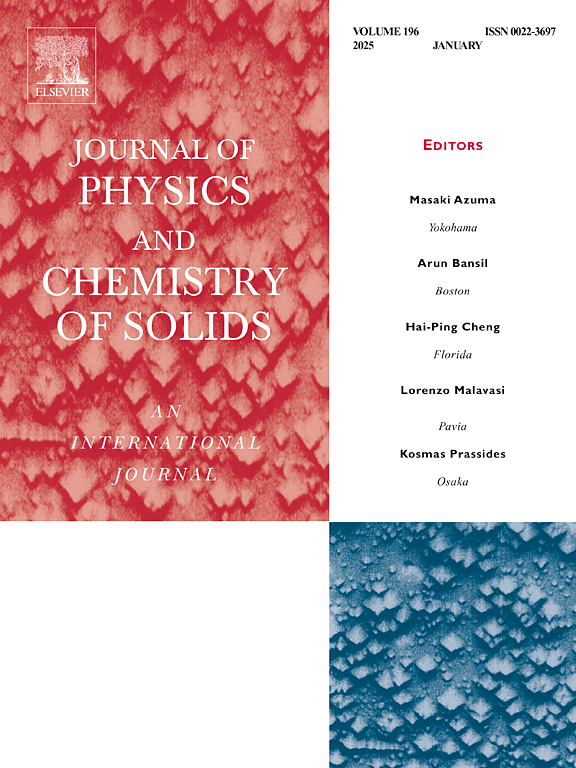Enhanced sensitivity of photodetectors with ZnSe as electron transport layer and Cz-Pyr as hole transport layer
IF 4.3
3区 材料科学
Q2 CHEMISTRY, MULTIDISCIPLINARY
引用次数: 0
Abstract
Perovskites are extensively employed as photoactive materials in several optoelectronic applications, such as light-emitting diodes, photodetectors, lasers, and solar cells, owing to their remarkable physical characteristics. In this study, we developed a numerical model for a vertical photodetector using a rubidium germanium iodide (RbGeI3) perovskite layer as the light-absorbing layer, to optimize its performance. The RbGeI3 perovskite layer acts as the hole transport layer (HTL) and electron transport layer (ETL), utilizing zinc selenide (ZnSe) and Carbazole Pyrene (Cz-Pyr) layers, respectively. Gold (Au) and fluorine-doped tin oxide (FTO) were employed as the top and bottom electrodes. The simulation was conducted using the SCAPS-1D software. The peak responsivity of 0.73 A/W and a detectivity of 4.1 × 1012 Jones were attained when the photoactive layer's thickness and doping concentration were optimized. These properties allow for device fabrication via solution-processing techniques and enable tuning of the band gap by adjusting the material's size.
求助全文
约1分钟内获得全文
求助全文
来源期刊
CiteScore
7.80
自引率
2.50%
发文量
605
审稿时长
40 days
期刊介绍:
The Journal of Physics and Chemistry of Solids is a well-established international medium for publication of archival research in condensed matter and materials sciences. Areas of interest broadly include experimental and theoretical research on electronic, magnetic, spectroscopic and structural properties as well as the statistical mechanics and thermodynamics of materials. The focus is on gaining physical and chemical insight into the properties and potential applications of condensed matter systems.
Within the broad scope of the journal, beyond regular contributions, the editors have identified submissions in the following areas of physics and chemistry of solids to be of special current interest to the journal:
Low-dimensional systems
Exotic states of quantum electron matter including topological phases
Energy conversion and storage
Interfaces, nanoparticles and catalysts.

 求助内容:
求助内容: 应助结果提醒方式:
应助结果提醒方式:


